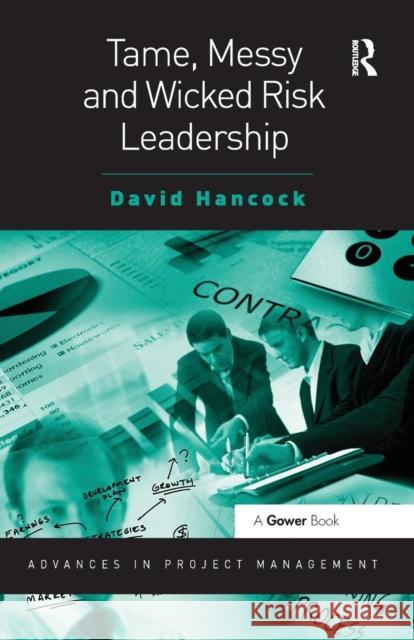Tame, Messy and Wicked Risk Leadership » książka
Tame, Messy and Wicked Risk Leadership
ISBN-13: 9780566092428 / Angielski / Miękka / 2010 / 114 str.
Tame, Messy and Wicked Risk Leadership
ISBN-13: 9780566092428 / Angielski / Miękka / 2010 / 114 str.
(netto: 212,77 VAT: 5%)
Najniższa cena z 30 dni: 216,55
ok. 22 dni roboczych
Dostawa w 2026 r.
Darmowa dostawa!
The general perception amongst most project and risk managers that we can somehow control the future is, says David Hancock, one of the most ill-conceived in risk management. The biggest problem is how to measure risks in terms of their potential likelihood, their possible consequences, their correlation and the public's perception of them. The situation is further complicated by identifying different categories of problem types; Tame problems (straight-forward simple linear causal relationships and can be solved by analytical methods), and 'messes' which have high levels of system complexity and have interrelated or interdependent problems needing to be considered holistically. However, when an overriding social theory or social ethic is not shared the project or risk manager also faces 'wickedness'. Wicked problems are characterised by high levels of behavioural complexity, but what confuses real decision-making is that behavioural and dynamic complexities co-exist and interact in what is known as wicked messes. Tame, Messy and Wicked Risk Leadership will help professionals understand the limitations of the present project and risk management techniques. It introduces the concepts of societal benefit and behavioural risk, and illustrates why project risk has followed a particular path, developing from the basis of engineering, science and mathematics. David Hancock argues for, and offers, complimentary models from the worlds of sociology, philosophy and politics to be added to the risk toolbox, and provides a framework to understand which particular type of problem (tame, messy, wicked or messy and wicked) may confront you and which tools will provide the greatest potential for successful outcomes. Finally he introduces the concept of 'risk leadership' to aid the professional in delivering projects in a world of uncertainty and ambiguity. Anyone who has experienced the pain and blame of projects faced with overruns of time or money, dissatisfied stakeholders or basic failure, will welcome this imaginative reframing of some aspects of risk management. This is a book that has implications for the risk management processes, culture, and outcomes, of large and complex projects of all kinds.











